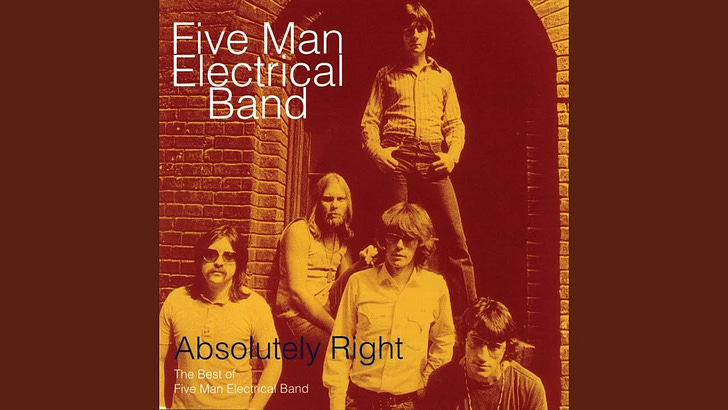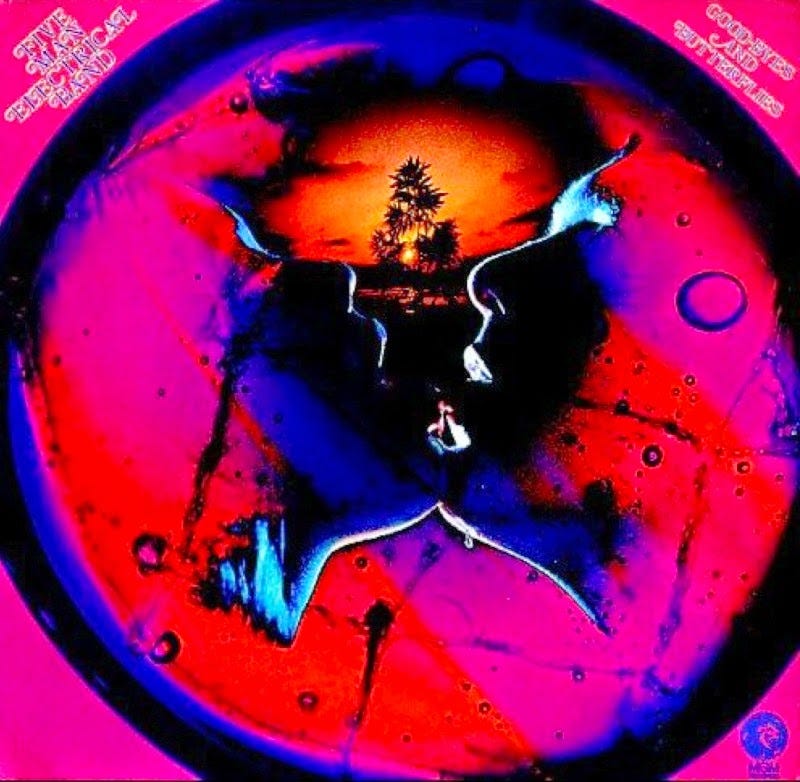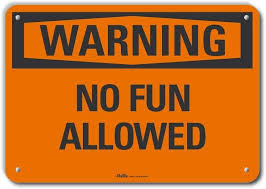"Signs" by the Five Man Electrical Band (1971)
My favorite protest songs from the 60s and early 70s
Welcome, everyone, to the twelfth post in this series about my favorite protest songs from the sixties and early seventies.
If you’re new, here’s a list (with links) of what we’ve covered so far:
“Blowin’ in the Wind” by Bob Dylan (1963)
“Masters of War” by Judy Collins (1963)
“Eve of Destruction” by Barry McGuire (1965)
“For What It’s Worth (Stop, Hey What’s That Sound)” by Buffalo Springfield (1966)
“Gimme Shelter” by the Rolling Stones (1969)
“Sweet Cherry Wine” by Tommy James & the Shondells (1969)
“Give Peace a Chance” by the Plastic Ono Band (1969)
“Big Yellow Taxi” by Joni Mitchell (1970)
“Ball of Confusion (That's What the World Is Today)” by the Temptations (1970)
“Ohio” by Crosby, Stills, Nash & Young (1970)
“War” by Edwin Starr (1970).
Other substackers have also offered their own interesting takes:
Mick McJesus of Mick’s Substack put together a playlist of about 140 protest songs
NickS asked “What makes a good protest song?” and gave his own list of favorites
Jackie R shared a song that makes fun of protest songs
David Drayer explained the Australian protest song “Waltzing Mathilda.”
There will be one more of my favorite protest songs after this, followed by a list of honorable mentions. I’ll end with a summary post looking across the series and seeing what, if anything, this motley collection of protest songs tells us.
Today we have a song by a band that had loads of hits in their native Canada, and even did a joint album with The Guess Who, but scored just one international hit — a protest song — and what a memorable and fun song it is.
Protest song of the day
One thing I’ve noticed doing this series is that protest songs tend to come in waves, perhaps because of artists emboldening one another as they react to developments in the environment and the zeitgeist.
One of those waves was in the early 1970s, with even the determinedly apolitical Motown releasing a spate of protest songs by different acts, including (as I’ve posted) the Temptations and Edwin Starr.
Perhaps most unexpected — but not entirely surprising — was witnessing the normally laid-back and polite Canadians venting their own outrage at the state of things in some pointed protest songs, with Neil Young the driving force behind Crosby, Stills, Nash & Young’s reaction to the Kent State Massacre with the group’s mega-hit “Ohio.”
Another band that came out with an anthem of outrage and vilification against ‘The Establishment’ was the Five Man Electrical Band — formerly known as The Staccatos — hailing from Ottawa, the capital city of Canada.
Ironically, the song was the opening track on an album called Good-byes and Butterflies, released in 1970, that contained such songs as “Safe & Sound (With Jesus),” “Moonshine (Friend of Mine),” and “All is Right (With the World).”
Given the album cover and title and the names of the other ten tracks, you wouldn’t be off-base in anticipating that the song, called “Signs,” might be about religious omens.
Or even more likely being a pop-rock song, about cold shoulders, unexplained absences, suspicious phone calls, and other ‘signs’ that the singer was about to get dumped by their latest squeeze, or worse yet, by ‘the One’ they were counting on sticking around for the rest of their earthly existence and keeping them loved-up and happy.
But no, “Signs” has nothing to do with stigmata or traitorous and absconding lovers.
Far more brilliant than that, it is nothing less than a diatribe against the obnoxious and unacceptable signs — road, building, fence, and window signs — that we encounter in daily life, and a primer on how to fight back against them.
Herewith is a summary of the sage advice delivered in music, rhyme, and a variety of lyrical exclamations and flourishes by the Five Man Electrical Band (with a bit of poetic license on my part, of course):
The obnoxious sign: We don’t hire freaks, meaning you with the long hair, fella!
How to fight back: Hide your hair in your hat and, once you get the job, take it off, let your glorious mane spill out, and remain ‘innocent’ as you watch the ‘square’ turn beet red and sputter as they try to think of a way to retract their job offer
The atrocious sign: Trespassers will be shot on sight
How to fight back: Jump up on the fence (stay on the outside, you don’t want to get shot!), shake your fist, and shout at those cretins and sinners for violating sacred law by putting a fence around God’s country and denying it to everyone but themselves
The outrageous sign: Only members and guests welcome, shirt and tie required
How to fight back: Hang around reading the sign and asking questions that reveal the unfairness and inanity of the policy until they call security to throw you out — and don’t go quietly, disrupting the pursuits of as many members as possible
The ludicrous sign: Everyone is welcome to come into church, kneel, and pray — and donate to the collection plate when it comes around
How to fight back: Leave a note in the plate saying “Gee thanks, Lord, for your interest and concern, and I’m happy to report that I’m alive and well but don’t have two pennies to rub together at the moment, so you don’t mind if I help myself to some of this spare change, do you?”
In my view, the song’s particular brilliance was in pointing out that billboards and signs were popping up everywhere “blocking out the scenery” and ordering us to “do this” but “don’t do that.”
If you were a hippie in the early seventies, it was “blowin’ your mind,” and if you were a high schooler like me, it was the best protest song against authoritarian parents and fascist school administrators money could buy. Preserved for eternity on vinyl, no less.
“Right on, man,” we agreed. “Those squares have f*cked everything up, so they can’t go telling us what to do or how to live our lives. We ain’t listenin’ to them, man! No way!”
Also ironic about “Signs” is that the band and the label, MGM Records, didn’t know what gold they had and released it as the B side of a song called “Hello Melinda, Goodbye” — and it failed to chart.
As famous screenwriter William Goldman1 said about the movie business, which, as we can see, is often true of the music business as well, “Nobody knows anything... Not one person in the entire motion picture field knows for a certainty what's going to work. Every time out it's a guess and, if you're lucky, an educated one.”2
The label’s guess had clearly been wrong, but cosmic luck turned out to be on the side of the band and the song. The original album cover showing a picture of a marijuana plant had caused a minor controversy and the label found itself forced to reissue the album with a new cover (below).
MGM Records also decided — why the heck not? — to reissue the same single in 1971 but with “Signs” switched to the A side, and that’s when the band found themselves with a runaway international hit.
Disc jockeys and ‘we’ve had enough’ armchair protesters everywhere — myself included — loved it.
The song went to #3 on the U.S. Billboard Hot 100 and ranked #24 on the Billboard chart for the year (1971), selling one million copies and reaching gold status within just four months. It also hit the top 5 in Canada and Australia.
I offer two versions of this highly entertaining song for your listening pleasure. At the top of the post is the original by the Five Man Electrical Band. This version is a must-listen.
As an additional treat, I offer the live unplugged cover by Tesla (below), from their 1990 album Five Man Acoustical Jam.
Their ‘clean’ and faithful radio version was the band’s highest-charting single, going to #2 on the Billboard Mainstream Rock chart and #8 on the Hot 100, and taking the album platinum.
The song was a no-brainer for Tesla, a five-man, long-haired, blue collar band out of Sacramento, California, who honored the song’s creators with the naming of their album.
The song has also been sampled a few times, again for protest songs, with Fatboy Slim making it the basis for his 2004 song and video “Don’t Let the Man Get You Down” about a racist dude named Don. Also worth a listen.
Song credits
Songwriter - Les Emmerson
Producer - Dallas Smith
Five Man Electrical Band:
Les Emmerson - guitar and lead vocals
Brian Rading - bass guitar
Ted Gerow - keyboards (organ, piano)
Michael “Mike Bell” Belanger - drums, vocals
Rick “Bell” Belanger - percussion, vocals
William Goldman’s screenplays include The Princess Bride, Butch Cassidy and the Sundance Kid, All the President’s Men, Harper, and Marathon Man, among others.
Adventures in the Screen Trade. 1983.











A still very relevant tune...
Ellen rolls another rounder. Two quick stories: got hired into Bell Labs sight unseen through a headhunter, when the manager met me at the entrance, hair down to my arse, his expression was memorable. He became my staunch ally for the next two decades.
Went into a highbrow steak restaurant with my work buddy for dinner wearing my tattered hillbilly hat (trademark). When I asked the host if hats are allowed, he replied, "not that one".
Remnants from the time, and the power of music.